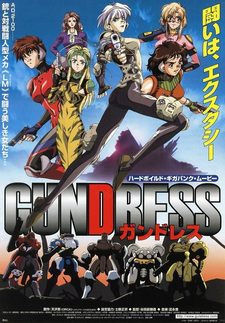Нет описания
Боевой доспех / Gundress
Информация
Тип:
Фильм
Длительность эпизода:
1 час 24 мин.
Статус:
20 марта 1999 г.
Жанры:
Тема:
Рейтинг:
R+
Первоисточник:
Неизвестен
Альтернативные названия:
···
У аниме:
2 отзыва4 комментарияРейтинг
5.41
Более-менее
Студия
Описание
назад
Твой комментарий

Ну вот, да: ja.wikipedia.org
Many scenes were left unfinished, with the characters painted in a single color because the coloring of the cels had not been completed in time, the filmmakers' fingerprints remaining on the screen, and characters repeating the same actions over and over again due to a lack of animation. On the first day of the film's release, the unusual occurrence was reported in newspapers and it became a hot topic, with some people even going to the cinema to see the film to see how unfinished it was. Some people even went so far as to film the film with video cameras.
Work continued on the film after its release to complete it for secondary use, such as in software packages and satellite broadcasting. The finished version was screened for two weeks from April 29, 2000 at Ueno Star Movie in Ueno, Tokyo. It is said that an additional 100 million yen was spent on completing it. Toei sued Nikkatsu for damages over this unfinished film, while Nikkatsu sued Sanctuary, and Sanctuary sued Studio Junio. Studio Junio, which was contracted to produce the film, had also had trouble with missing deliveries and the film not being aired in 1997, and was sued for damages for this film, which later led to the company going out of business.
Toei Video declined to release it on video, but a DVD version was released by Nikkatsu on September 22, 2000. The official website announcing the DVD release calls it "a shocking work that caused a stir among the industry and fans alike." The DVD also includes the unfinished theatrical release version, known as the "3.20 version," as a special feature. However, since some parts were cut, the film does not feature multiple angles.